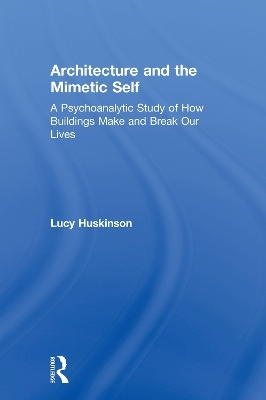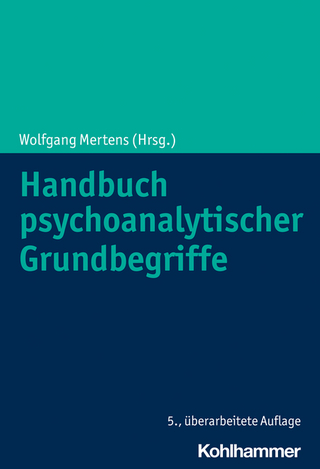
Architecture and the Mimetic Self
Routledge (Verlag)
978-0-415-69303-5 (ISBN)
Criteria for effective architectural design have for a long time been grounded in utilitarian and aesthetic principles of function, efficiency, cost, and visual impact. Although these are important considerations, they often fail to meet the fundamental needs of those who inhabit and use buildings. Misconceptions are rife, not least because our responses to architecture are often difficult to measure, and are in large part unconscious. By bridging psychoanalytic thought and architectural theory, Architecture and the Mimetic Self frees the former from its preoccupations with interpersonal human relations to address the vital relationships that we establish with our nonhuman environments.
In addition to providing a guide to the unconscious behaviours that are most relevant for evaluating architectural design, this book explains how our relationships with the built environment inform a more expansive and useful psychoanalytic theory of human relationship and identity. It will appeal to psychoanalysts and analytical psychologists, architects, and all who are interested in the overlaps of psychology, architecture, and the built environment.
Lucy Huskinson, Ph.D, is Senior Lecturer in the School of History, Philosophy, and Social Sciences at Bangor University, UK. She is author and editor of various books and articles on philosophy, psychoanalysis, and the built environment, and co Editor-in-Chief of the International Journal of Jungian Studies.
Acknowledgements
List of figures
CHAPTER ONE INTRODUCTION: BUILDINGS DESIGN US AS MUCH AS WE THEM
CHAPTER TWO ARCHITECTURAL BLUEPRINTS OF PSYCHE
CHAPTER THREE THE ARCHITECTURAL EVENT: BUILDINGS AS EVENTS THAT DISCLOSE OUR BEING
CHAPTER FOUR THE BODY’S ROLE IN THE ARCHITECTURAL EVENT: FORTIFICATION AND CONTAINMENT
CHAPTER FIVE USING ARCHITECTURE TO THINK OURSELVES INTO BEING:
BUILDINGS AS STOREHOUSES OF UNCONSCIOUS THOUGHT
CHAPTER SIX THE SELF THAT IS DISCLOSED THROUGH ARCHITECTURE
CHAPTER SEVEN CONCLUSION: ARCHITECTURE THAT CAPTURES THE IMAGINATION: DESIGNING AND RESPONDING TO EVOCATIVE ARCHITECTURE
| Erscheint lt. Verlag | 14.2.2018 |
|---|---|
| Zusatzinfo | 7 Line drawings, black and white; 34 Halftones, black and white |
| Verlagsort | London |
| Sprache | englisch |
| Maße | 156 x 234 mm |
| Gewicht | 589 g |
| Themenwelt | Geisteswissenschaften ► Psychologie ► Psychoanalyse / Tiefenpsychologie |
| Medizin / Pharmazie ► Gesundheitswesen | |
| Naturwissenschaften ► Geowissenschaften ► Geografie / Kartografie | |
| Technik ► Architektur | |
| ISBN-10 | 0-415-69303-9 / 0415693039 |
| ISBN-13 | 978-0-415-69303-5 / 9780415693035 |
| Zustand | Neuware |
| Haben Sie eine Frage zum Produkt? |
aus dem Bereich


